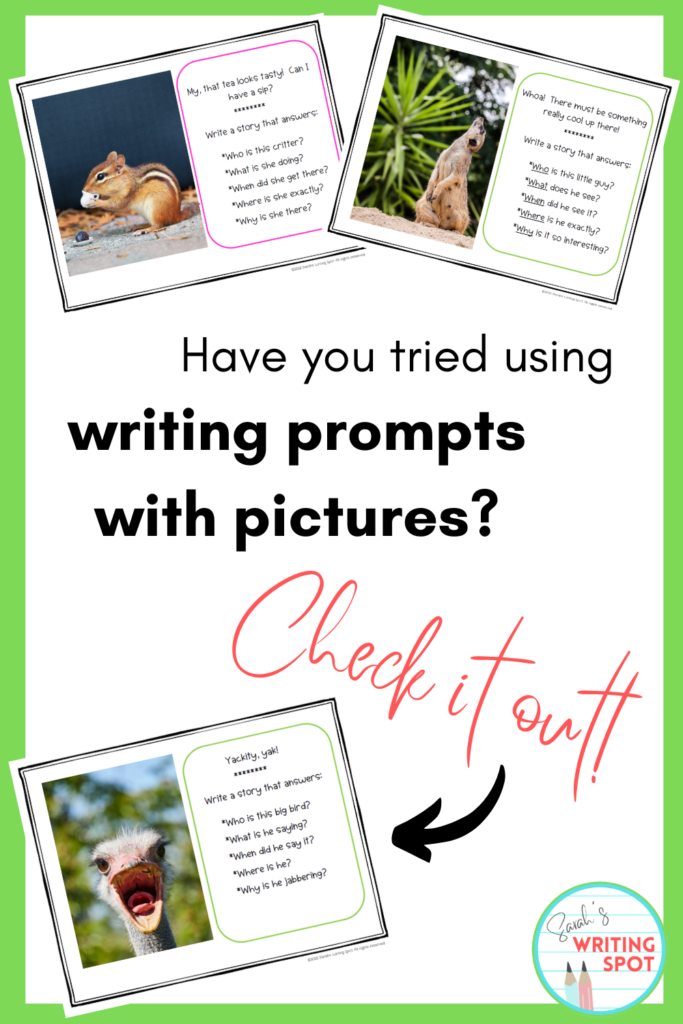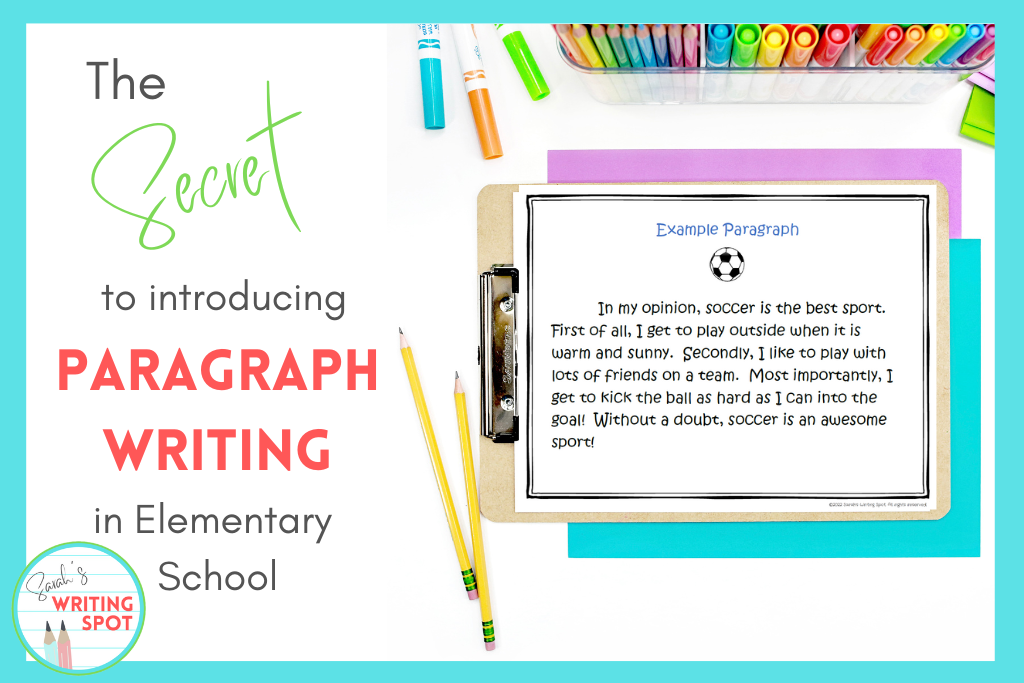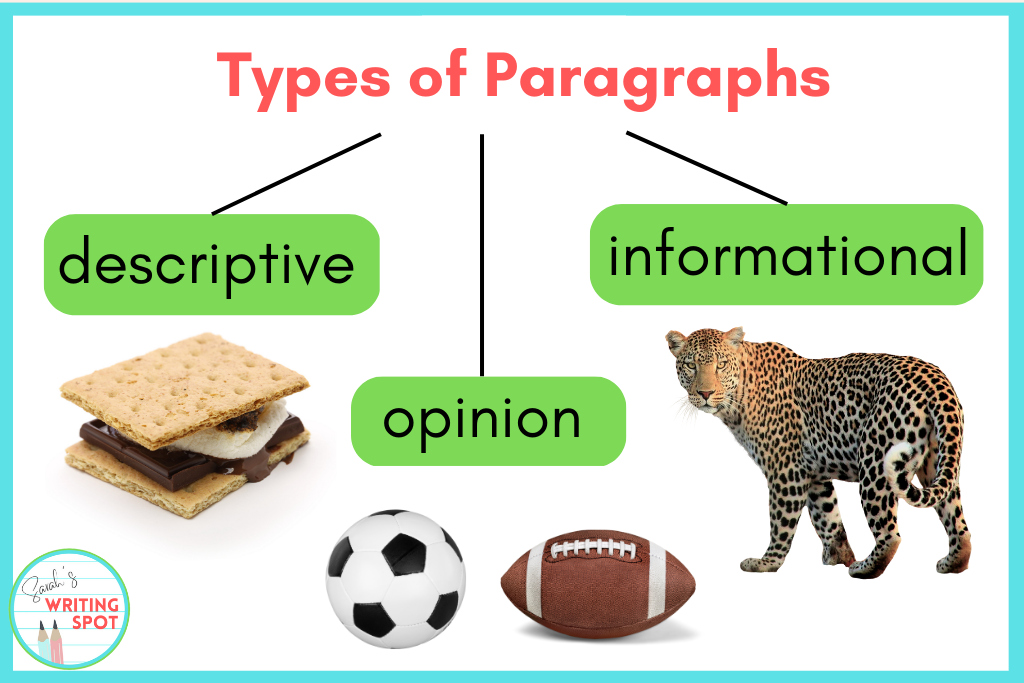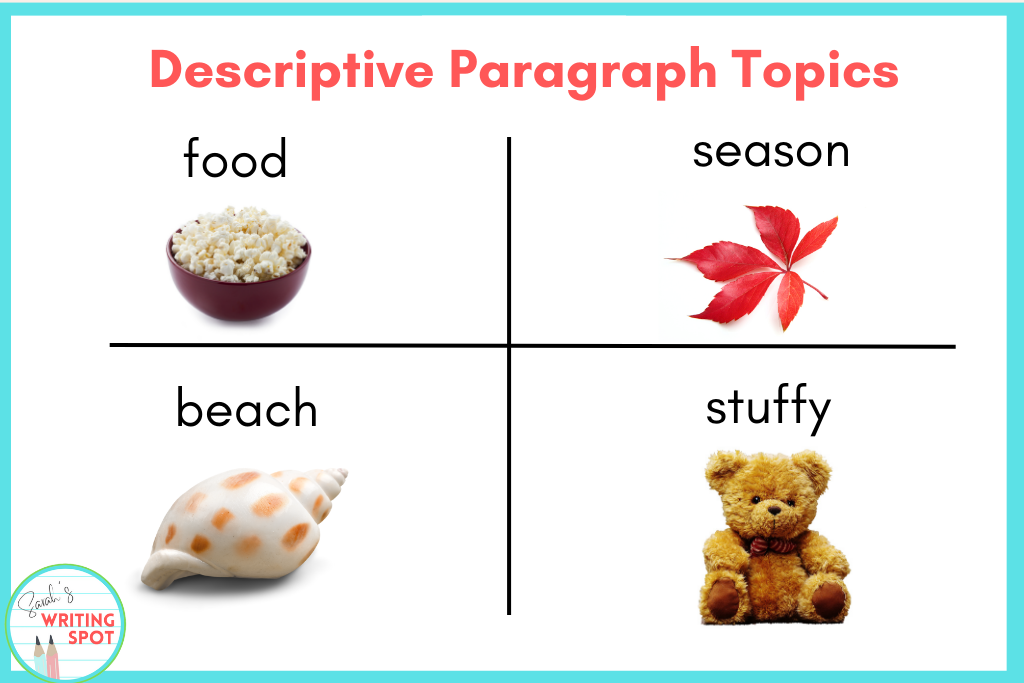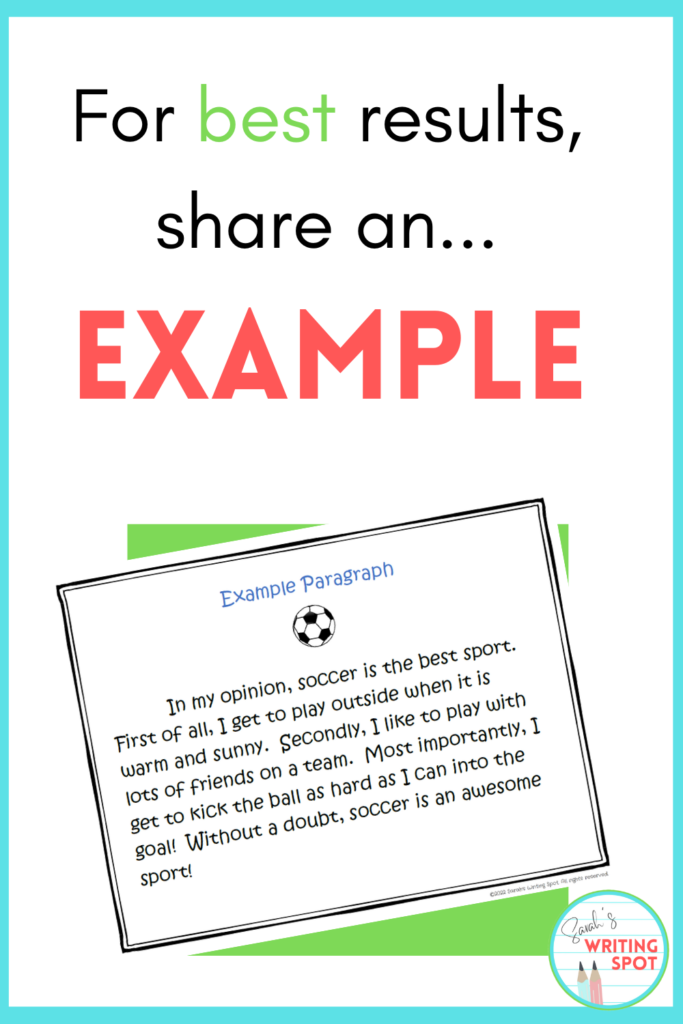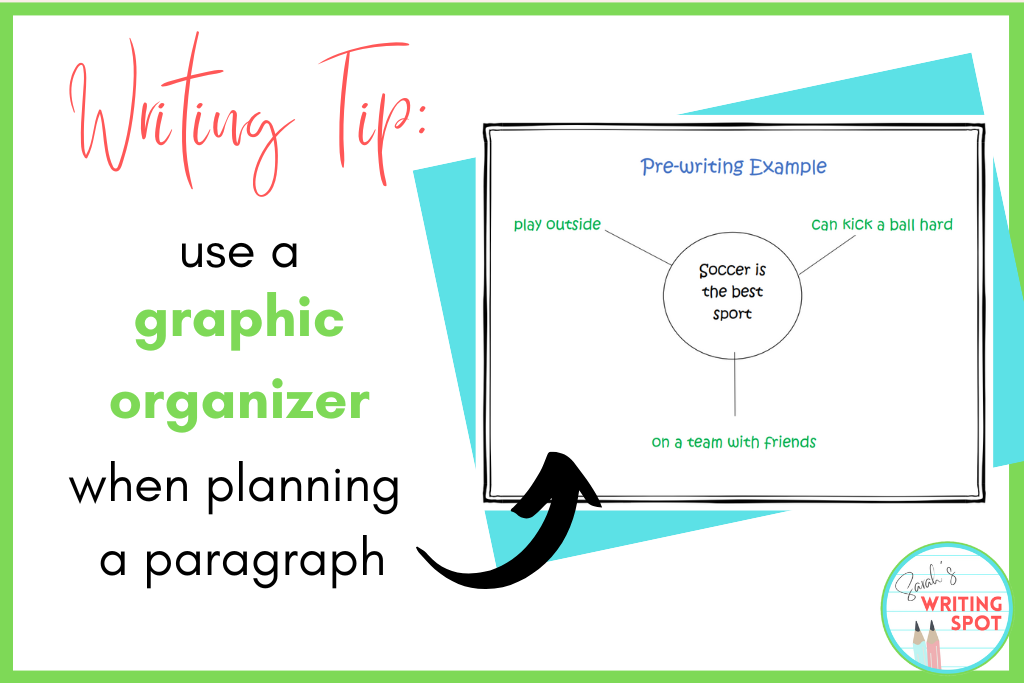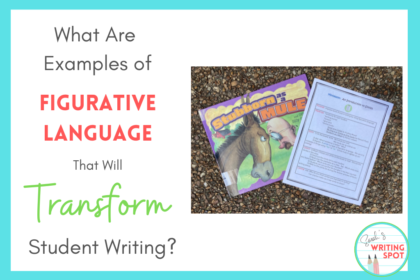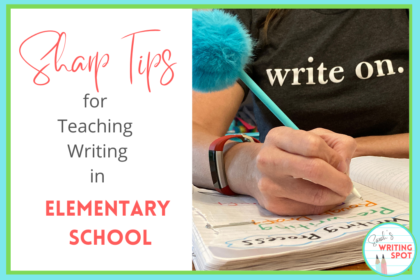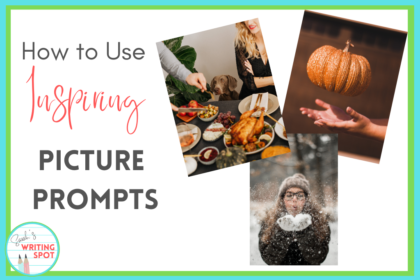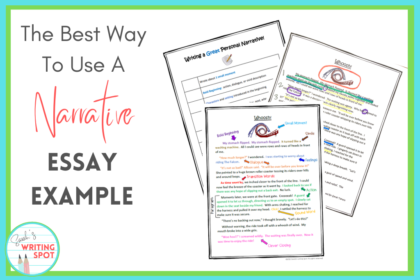Introducing paragraph writing to your students this year? If you’re an elementary educator, that’s probably a “Yep!” Introducing paragraph writing is a big step for kids in 2nd and 3rd grade. Your kiddos are making the big leap from a few isolated sentences to a hearty 5-8 sentences. How do you help them make that jump? And more importantly, where do you start?
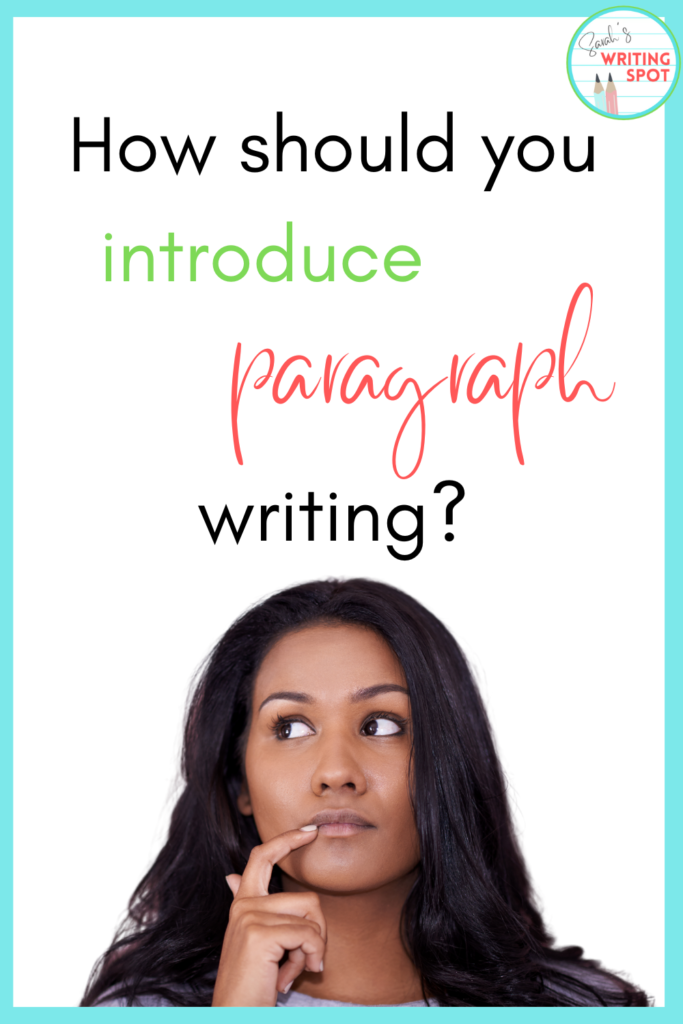
When I was a 3rd-grade teacher in the classroom, I was so consumed with mastering reading and math that writing was sometimes…left out. Time wasn’t the only reason writing got overlooked. I also didn’t feel like I knew what I was doing.
Let’s be honest: It’s hard being an elementary educator! You have 5 core subjects to teach and you’re supposed to be a specialist in all of them. Well, let’s just say that writing fell to the bottom of the list for me.
Now, as many of you know, I tutor elementary students one-on-one in writing every week. I actually have the time to learn what our kids need in writing class. To learn how to help them make magic with their pencils. Want to know the secrets I’ve discovered? Read on…
Step 1: Identify the topics on paragraph writing
Before students write their first paragraphs, teach them about the different topics on paragraph writing. Explain that different paragraphs have different purposes.
In elementary school, the main types of paragraph writing include descriptive, opinion, and informational. Notice that narrative isn’t included. (It’s hard to squeeze a story into a nice, neat paragraph.) Students may still write narrative stories, but they don’t follow a single-paragraph format.
What are some DESCRIPTIVE topics for paragraphs?
Some of my go-to descriptive topics for paragraphs include ones that involve 4-5 senses. For example, describing a stuffed animal, a season, or the beach is popular. My favorite topic, though? Food. It’s always a hit! Provide a healthy snack or treat for inspiration and the smiles always come out.
What are some OPINION topics for paragraphs?
Opinion writing is always a fun topic for kids, too. This type is later called “persuasive” in upper elementary. Opinion topics for paragraphs can be as simple as writing about a favorite sport or activity and then explaining why it’s so awesome. Students can also compare 2 things and explain why one is better. (Example: Hotdogs are better than hamburgers.)
What are some INFORMATIONAL topics for paragraphs?
There are various types of informational writing done in elementary school. Two that I like to do with my students are a biography and a research project. For the research project, I have students choose an exotic animal to learn about using the San Diego Zoo Wildlife Explorers website. With its brightly colored pages and user-friendly interface, your students will ADORE this site!
What are OTHER topics to write a paragraph on?
If you’re looking for other topics to write a paragraph on, I recommend using a “Writing Ideas” list in student journals. At the beginning of the year, I always have my students glue one on the first page. We make lists about their family, friends, pets, hobbies, games, travels, and so on. They’ll never run out of writing ideas again!
Step 2: Share examples of a well-rounded paragraph
Now it’s time to pick a topic and write, right? Nope! There are a few more steps you don’t want to miss:
Show an Example Paragraph
Before students write their own paragraphs, they need to see an example. They need to know all the necessary parts of a paragraph: topic, details, and closing. I preach about the importance of examples in almost every blog post. But there’s a reason why! If students don’t see an example, they don’t know what’s expected of them.
Paragraph Writing Outline
A paragraph writing outline is always helpful, too. There is a variety to choose from, but my favorite has always been the hamburger model. (Any lesson that brings food into the classroom is a winner in my book!)
Before a writing unit, I always give my students an example paragraph to analyze using the picture of a hamburger. Together, we circle the topic and closing sentence in brown marker (for the bun). Then, we circle the juicy detail sentences in the middle with green, red, and black (for the lettuce, tomato, and meat). Who knew writing could be so tasty?
Step 3: Pre-write using a graphic organizer
NOW it’s time to start writing, right? Almost!
If you don’t want your students to clam up with writer’s block, you’ve got to give them a graphic organizer. Otherwise, you run the risk of blank stares and anxious pencils.
I use different organizers for different types of writing. For descriptive and opinion writing, I usually use a bubble graph. For research and biography, I use specialized charts. Whatever you use, model how to fill in the organizer with your own example FIRST before your students are asked to do it. You’ll get much better results!
Step 4: Time to Write!
Yep! It’s time!
Using the hamburger model for guidance, model how to write a topic sentence, details, and closing. Take turns with your students. You write a sentence, then they write a sentence. Share. You write a sentence, then they write a sentence. Share. If this is their first time writing a paragraph, they will need lots of back-and-forth support. By using this technique, no one will get lost along the way.
Final Thoughts
You did it! Your students have now graduated to paragraph writing. Woo hoo!
Introducing paragraph writing is a sign that your kiddos are growing up. How exciting! They are evolving into mature writers that are learning how to express themselves. Giving them the tools to express their own ideas is an amazing gift to give someone. A gift that will last a lifetime!
SARAH
Looking for PARAGRAPH UNITS that are already written for you? Try these!
